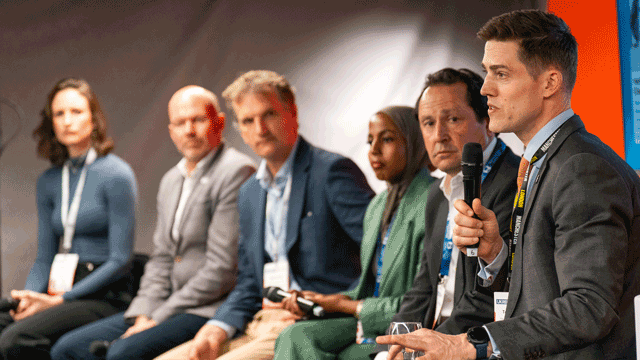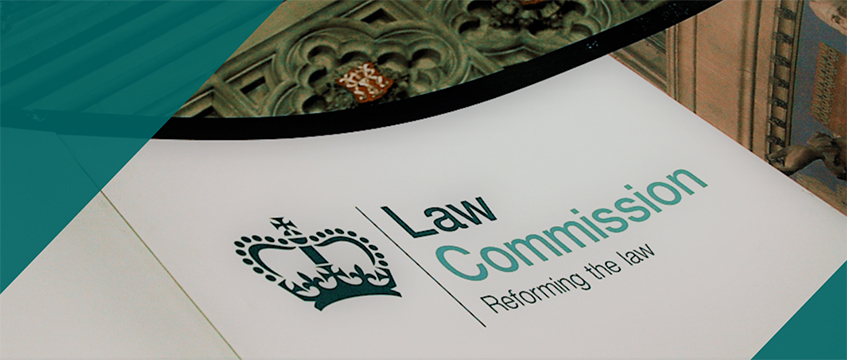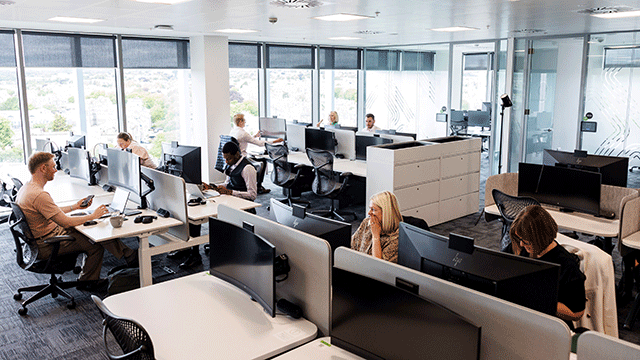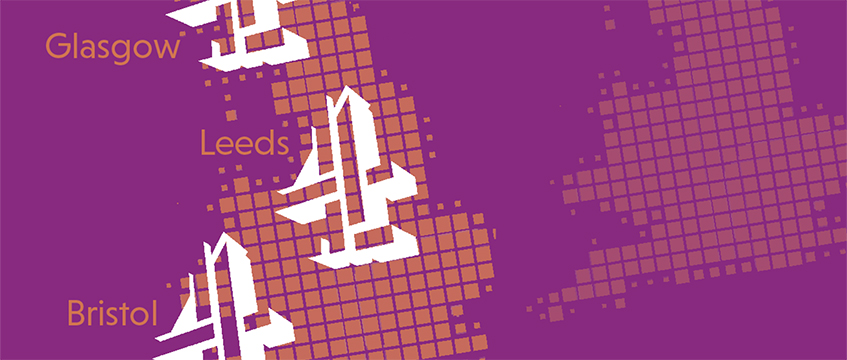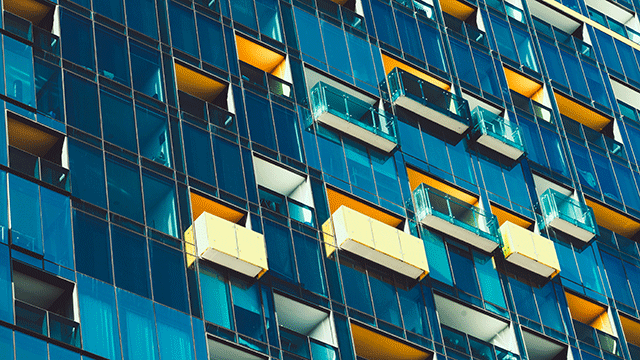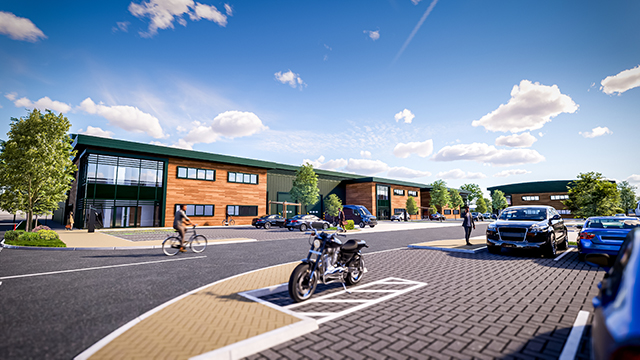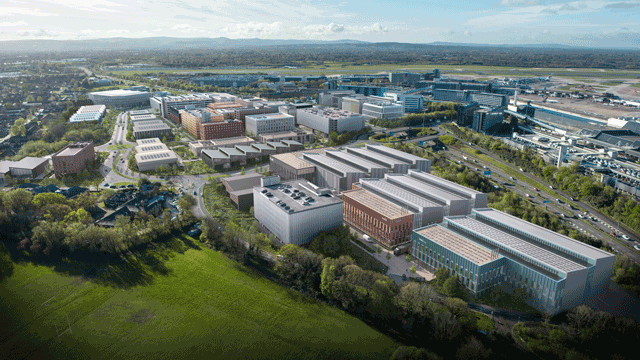As Channel 4 prepares to take its brand to the regions with a second HQ in Leeds and creative hubs in Bristol and Glasgow, the man behind the new iterations of workspace across the portfolio reveals how he plans to deliver the right environment for all
From NBCUniversal to Channel 4, Lee Oxley has designed workspace for some of the biggest creative occupiers in the world. Now, nearly three years into his current role as Head of Workspace at Channel 4, Oxley is responsible for upgrading the broadcaster’s London HQ, as well as creating spaces at the new Leeds HQ and creative hubs in Bristol and Glasgow.
He talks to EG about what makes the ultimate creative workspaces, the trick to successful change management and the power of the Channel 4 brand.
What is the key to delivering the right workspace for creative occupiers?
I don’t like being a workplace evangelist! Everyone seems to talk a lot about workspace and workplace over the last few years, but I would rather just design, implement and build great spaces and work with great teams. It really comes down to finding the right people, from the contractors to the architects, and then finding the right space for the client.
At NBCUniversal we took them out of two old offices into Renzo Piano’s Central St Giles, WC2. It was a nine-month design and fit out exercise, quite pacy, – we built cinemas, edit suites and production suites, and it all came together.
But sometimes people talk about these types of projects as if they are shrouded in magic and mystery – like some sort of dark art. They’re not.
It is about knowing your people, understanding what those people do all day, and creating a space where they want to work.
We can get quite flippant around this, but I always remind people that we do still spend a lot of time at our ‘home’, whether that be a desk, a base or a specific area within the space, undertaking an activity. So, while you can create all of these incredible spaces to support them, most of the day most people will be sitting at their ’home’, doing an activity. And that’s where I tend to start.
How have you worked that into the new Channel 4 HQ design in London?
This is a great building, it is a privilege to be given the responsibility to work and progress with it. It is a Richard Rogers design and it looks great externally. Internally, it is spatially inefficient but we have a real opportunity to maximise the space more.
The desking is broken up by meeting rooms down the centre of each spine, it breaks up collaboration and forms a barrier between teams and it is just not the right layout for us anymore.
The original reception area used to be tight and there was nothing celebrating our content apart from TV screens hanging from the ceiling and some weren’t even in HD. The canteen still reflected the original build.
So, for the redesign, which is happening now, we worked out the key things we needed to do. It helps that we own our building, so we don’t need to ‘sweat the asset’.
We started with the reception and canteen space as we wanted to give back the space to our staff. It was being used for events as well as a restaurant but the seating configuration didn’t work. Everything was in banks of 10-12 seats – well, people don’t tend to eat lunch in groups of 10-12.
It didn’t really work as an events space either as it was not designed that way– it wasn’t built to be an events space.
So we took it back. We finished the new “Canteen”, (Channel 4 staff named it “The Canteen” in a business wide vote) last July, and on the first day we reopened it we saw a 300% jump in sales on the first day.
We consistently still see a 38% lift per day in coffee sales [compared with before the redesign] and food sales are up 25%. We used to feed 200 people a day; now it’s 300 which is around a third of our staff and we have some fantastic options for lunch around the area.
What we have decided is that there should be a space like this – a communal area where people can come together – on every floor. So we are working on that.
The way the meeting rooms had been configured previously really didn’t work. They are compact, prefab rooms with no real acoustic treatment that block collaboration across floors. They are a barrier.
The size of the older desks consume a lot of Real Estate, the pedestals were originally designed for VHS cassettes!. So over the past two years we have done a massive upgrade to regain control of everything.
What has been the biggest challenge in upgrading the space?
Change Management. It is one of the most important, but often underestimated, aspects of the project. There is a culture here, and change has to be introduced in the right way. You can’t take a building like this one and drop an identikit upgrade in. It is about working with our people and coming up with a plan where people feel involved.
Some people have been working here for 15 years – more in some cases. Taking what they know and changing it is a tough thing to do, and while 80% of the business is crying out for an upgrade, there is still 20% that doesn’t like change. It’s a cliché, but it all comes down to communication. We have taken staff on the journey, and that makes the change easier.
In a business where you need to sweat the asset, a one-size-fits-all interior and design strategy makes sense. But in a building like this, where we don’t need to do that, why not give people what they want and need? Someone might say “well, my team is made up of lawyers, for example, – hot-desking won’t work for them” and we will listen to that, we will challenge it, but the result is we perhaps don’t make the same level of change because we listened.
We want to keep the culture here and make this an even more amazing working environment – we can do that because we have the luxury of choice. We can take the 260 desks currently on each floor and mix things up to replace them with more than 500 ‘seats’ instead, using different types of workspace, from sofas to high tables and break-out areas. That 500 doesn’t include meeting rooms either.
Let’s talk about Leeds – another exciting new project, and one where you will be starting much more from scratch. Will you be emulating the London space in Leeds?
London will form a blueprint for Leeds and our creative hubs in Bristol and Glasgow, but we won’t be looking to just replicate what we have there without taking the other locations into consideration.
You can’t just say “this worked in London so it will work in Leeds too”. We are taking inspiration from other offices in the city, Leeds is home to Sky, First Direct and Asda.
We are looking at some temporary start-up space in the city centres we will be setting up as we start to progress and shape our plans.
The selection of the buildings are still in progress – we can’t reveal the name yet – so we are clear we need to make sure that we make the new space a real landmark. We have selected The Garment Factory for our new Creative Hub in Glasgow.
We will have another canteen [similar to that of the London HQ] completely designed for Leeds and with great views. And we are also building a Studio.
We like to get staff involved in some of the big decisions such as furniture choices and colours. Alex [Mahon, Channel 4 chief executive] gets really involved in choosing the look, feel, furniture & fabrics.
We have loved working with Leeds so far – you couldn’t ask for a city to be more engaged from the start.
When you have an iconic occupier like Channel 4 with an iconic London HQ, what does being selected as a second base mean for a city like Leeds?
When we arrived at the shortlist, It was an incredibly tough decision for us to make but ultimately, it was felt, Leeds is [more suited to] Channel 4 – it is different, a bit risky. And there is enough creativity in Leeds to ensure that we are not the spark. There are so many creative businesses in Leeds that we are among lots of our peers and there is a creative hub.
Then there is the fact that the power of the Channel 4 brand is sometimes underestimated. When we go to places like Leeds and meet with people there, everyone wants Channel 4 to come to the city. The brand’s reach is huge. It is different there and you invest a bit personally. And when you see how people feel about Channel 4, it is powerful. And you feel privileged to represent the brand.
Everyone is really excited in Leeds, but they are in Glasgow and Bristol too.
How did it feel being a London brand taking the Channel 4 name across the UK via the creative hubs and second HQ?
Because it is one of the biggest thing to happen to Channel 4 in its history, what we are doing represents such a huge change. That’s a lot of weight to carry on our shoulders. Whether it is 250,000 sq ft or 2,500 sq ft, you are representing Channel 4 in a place that has fought so hard to be the winning bid.
Every city did an amazing job, and you have to absolutely work in sync with them to make sure that what we do means they can shout it from the rooftops.
To send feedback, e-mail emily.wright@egi.co.uk or tweet @EmilyW_9 or @estatesgazette




